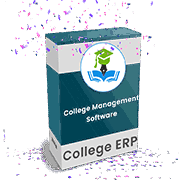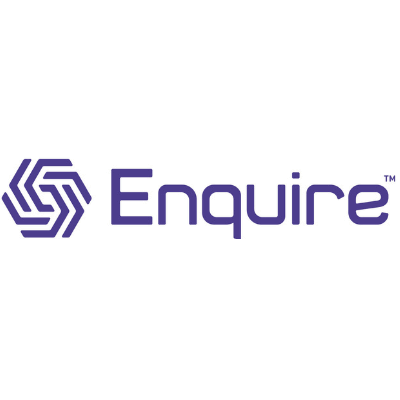What Is Scholarship Management Software?
Scholarship Management Software, often known as Scholarship Management Systems, is specialist software that assists businesses in efficiently managing their scholarship programs. It is a comprehensive solution that streamlines and automates the entire scholarship application and approval process, including award distribution and reporting.
This software provides a single platform, allowing organizations to conveniently administer all parts of their scholarship program from one location. It replaces manual processes such as paper-based applications, document tracking, and manual review, saving time and resources for both applicants and organizations. One of the most important advantages of Scholarship Management Software is online application management.
This enables firms to design personalized online application forms while still providing candidates with a smooth experience. They can also establish eligibility criteria, timelines, and requirements, making it easier to identify the best candidates. Another useful feature is the built-in review and selecting tool. It allows organizations to shorten the review process and work efficiently with various reviewers.
Reviewers can access applications, evaluate them using predetermined criteria, and discuss their findings with other reviewers. This promotes a fair and transparent selection process. Scholarship Management Software also includes capabilities to manage award distribution and disbursement. It enables groups to track cash, disburse rewards, and check the status of payments. This guarantees that awards are distributed accurately and on schedule, while keeping the process transparent.
Furthermore, this program provides extensive reporting features. Organizations can use reports to assess the success of their scholarship program, track applicant data, and identify areas for development. This data-driven strategy enables businesses to make better informed decisions about their scholarship programs.
What Are The Recent Trends In Scholarship Management Software?
Scholarship management software has become an indispensable tool for businesses and institutions that provide scholarships. As technology advances, the landscape of scholarship management software evolves.
Let's explore, we'll go over the latest trends in scholarship management software that prospective buyers should be aware of.
1. Cloud-Based Solutions: Cloud-based scholarship administration software solutions are gaining popularity owing to their flexibility and ease of use. These solutions enable users to access and control scholarship data from any device with an internet connection, removing the need for onsite installations. This trend is projected to continue as more firms use remote work and internet tools.
2. Artificial Intelligence (AI) Integration: AI technology is being used in scholarship management software to optimize and automate specific operations. For example, AI can be used to analyze scholarship applications and discover prospective matches based on predetermined criteria. It can also speed up the selection process by showcasing the most competent candidates. This trend is likely to boost the efficiency and accuracy of the scholarship management process.
3. Mobile Applications: Mobile scholarship management programs have grown in popularity as more people utilize cellphones for a variety of purposes. These applications make it easy for students to access and apply for scholarships while on the road. They also make it easier for organizations to contact with applicants and monitor their progress. Mobile apps are likely to become a typical component in scholarship management software.
4. Enhanced Data Security: With growing awareness about data privacy and security, scholarship management software suppliers are always enhancing their security protocols. This involves encrypting scholarship data, using multi-factor authentication, and performing frequent backups to assure its safety and integrity. Buyers should prioritize software that has strong security capabilities to secure sensitive data.
5. Customization And Integration: Organizations are seeking more flexible and integrated scholarship management software solutions to fit their specific requirements. They want the ability to personalize the user interface, workflows, and reporting features. Integration with other systems, such as student information systems and financial aid systems, is also gaining popularity since it simplifies data sharing and reduces manual data entry.
Benefits Of Using Scholarship Management Software
Scholarship management software is a useful tool for corporations and educational institutions who want to efficiently manage their scholarship programs. This program provides a number of advantages that can save time, effort, and resources while improving the overall scholarship experience for both candidates and administrators.
Let's explore, we'll look at the primary advantages of adopting scholarship management software to assist you make an informed selection when selecting the best software for your requirements.
1. Streamlined Application: Process One of the primary advantages of scholarship management software is its ability to streamline the entire application process. Traditional techniques such as paper applications and manual data entry can be time-consuming and error-prone. Using software, applicants may easily fill out and submit forms online, while administrators can track and assess applications from a single dashboard. This not only saves time, but also results in a more efficient and accurate process.
2. Automated Award Selection: Scholarship management software also provides automatic award selection, which reduces the manual work and bias that might occur with traditional systems. The software can be designed to utilize particular criteria to review applications and pick the best candidates for the scholarship. This not only saves time, but also guarantees fair and unbiased decision-making.
3. Effective Communication: Effective communication is essential in any scholarship program, and software can help speed the process. Administrators may simply contact applicants about the progress of their applications, missing papers, or other critical updates thanks to automatic email notifications and messaging. This leads to a more efficient and transparent communication approach, keeping applicants informed and engaged throughout the process.
4. Improved Data Management: Scholarship management software also provides advanced data management capabilities. It enables the storage, organization, and access of all scholarship-related data through a single, consolidated platform. This covers applicant information, award criteria, selection procedures, and more. This not only reduces storage space, but also makes it easier to keep a complete record of previous and current scholarship programs for future reference.
5. Enhanced Security: Both candidates and scholarship program managers prioritize the security of sensitive data, such as personal information and financial details. Scholarship management software protects this data using encrypted databases, role-based access, and other security features. This gives applicants piece of mind while also ensuring compliance with data privacy rules.
Important Factors To Consider While Purchasing Scholarship Management Software?
As you begin your search for the best scholarship management software for your organization, keep a few key considerations in mind. These considerations will help you make an informed and productive decision that meets your individual needs and budget.
1. Customization And Scalability: One important thing to examine is the software's capacity to be tailored to your organization's specific operations and needs. A one-size-fits-all solution may not address your organization's specific requirements. Furthermore, you should evaluate the software's scalability to ensure that it can handle the existing and future amount of scholarships.
2. Features And Functionality: Evaluating the software's features and functionality is critical in establishing whether it is appropriate for your firm. Some important elements to check for include application administration, review and selection processes, payment processing, and reporting. Make a list of the features your organization requires and compare them to the software's offerings.
3. User-Friendly Interface: The software's interface should be simple to use and understand. This is especially crucial if you have numerous team members utilizing the program because it reduces the learning curve and increases overall efficiency.
4. Compatibility And Integration: It is critical to assess the software's compatibility with your existing systems and its ability to connect effortlessly. This will save you time and resources in data management while also eliminating the need for various software solutions.
5. Data Security: As with any software, data security should be prioritized. To preserve sensitive information, ensure that the software provider has implemented sufficient data encryption and protection methods.
6. Support And Training: Look for a software vendor who provides dependable customer service and extensive training for your team. This ensures that your team has the information and abilities required to fully utilize the program.
7. Pricing Model: When comparing software solutions, consider the pricing model and how it fits within your budget. While some software may charge a one-time price, others may operate on a subscription basis with recurring fees. Determine which choice best suits your organization's financial situation.
Consider these crucial aspects while searching for scholarship management software to ensure that you choose a system that meets your organization's specific objectives, enhances efficiency, and provides a favorable return on investment. Always conduct thorough research and demos of software before making a final selection to confirm its compatibility and usefulness for your organization.
What Are The Key Features To Look For In Scholarship Management Software?
Scholarship management software is a crucial tool for educational institutions and organizations that provide scholarships to students. It helps to make the application and selection process more efficient and orderly. However, with so many options available on the market, selecting the proper software can be intimidating.
To help you make an informed decision, here are some crucial features to look for in scholarship management software.
1. Online Application Management: The software should enable students to submit scholarship applications online. This saves time and removes the need for paper-based applications, making the procedure environmentally friendly.
2. Customizable Application Forms: Each scholarship program may have unique requirements and criteria. The program should have configurable application forms that can be adjusted to the individual requirements of each scholarship.
3. Automated Communication: One of the primary benefits of scholarship management software is the ability to automate communications with candidates. Look for software that allows you to send automatic emails to confirm application receipt, provide updates on the selection process, and notify students about their scholarship status.
4. Comprehensive Database Management: The program should provide a feature-rich database for storing and organizing all applicant information, such as contact information, academic records, and supporting documents.
5. Robust Review And Selection Process: The software should allow for a fair and objective assessment and selection procedure. Look for features like blind review, scoring systems, and collaboration tools to ensure that applications are thoroughly and unbiasedly evaluated.
6. Financial Aid Management: Scholarship programs frequently require the payment of monies to qualified candidates. Look for software that can efficiently manage these financial transactions, such as recording payments and creating reports.
7. Mobile Compatibility: Since most students use mobile devices, the software should be mobile-friendly, allowing applicants to access the application and check their status while on the go.
8. Security And Data Privacy: Protecting sensitive information is critical in scholarship management. Look for software with strong security mechanisms in place to protect applicant data.
9. User-Friendly Interface: The program should be simple to use for both administrators and candidates. A user-friendly UI makes for a smooth and hassle-free experience for all users.
10. Technical Support And Training: Finally, the software provider should provide technical help and training to guarantee that the product is integrated seamlessly and used effectively.
Why Do Businesses Need Scholarship Management Software?
Scholarship Management Software is an essential tool for companies and organizations that provide scholarships to students. It offers a complete and efficient solution for overseeing the full scholarship process, from application submission to award distribution.
Here are some important reasons why organizations need scholarship management software.
1. Simplifies Application Process: Scholarship administration software enables organizations to effortlessly build and manage online application forms. This not only saves time and labor, but also eliminates the need for paper-based applications, making the entire process more efficient and environmentally beneficial.
2. Improves Communication: Communicating with candidates is critical during the scholarship process, and scholarship management software makes it easy to deliver updates, notifications, and other relevant information to them via email or text. This allows for a fluid and transparent communication flow.
3. Simplifies The Review Process: The program enables firms to construct a centralized database of all apps, making it easier for reviewers to assess and compare them. This expedites the evaluation process while also ensuring that grantees are selected fairly.
4. Automates Selection And Awarding: Scholarship management software automates the selection process using predetermined criteria, reducing the need for manual selection. This saves time and lowers the risk of human error. Furthermore, the software automates the awarding procedure, making it more efficient and convenient.
5. Improves Financial Management: Managing scholarship monies can be a difficult undertaking. Scholarship administration software streamlines the process by tracking and categorizing all financial transactions, making it easier to monitor money and assure their utilization.
6. Offers Real-Time Insights: Scholarship management software enables firms to generate data and insights in real time. This provides significant insights about the scholarship program's effectiveness, allowing firms to make data-driven program decisions in the future.
How Much Time Is Required To Implement Scholarship Management Software?
The implementation time for scholarship management software varies dependent on numerous aspects. These include the software's complexity, the size of your firm, and the amount of customisation necessary. Fully implementing scholarship management software often takes between a few weeks and several months.
Before beginning the implementation process, your business should have a clear grasp of its goals and objectives for adopting the program. This will help determine the extent of modification required and speed up the implementation process. Initially, your team will need to configure the software and enter all of the required data, such as scholarship criteria, application requirements, and applicant information.
This may take several weeks to complete, especially if your organization has a big number of scholarships and applications. The testing step begins after the program is set up and all of the data has been entered. This is a critical step in ensuring that the software is functioning properly and meeting your organization's requirements. It usually takes a few weeks to completely test the software and make any necessary changes.
Following the testing process, your team will need to be taught on how to utilize the program properly. This can take a few days or perhaps a week, depending on the complexity of the software and the size of your team. Overall, implementing scholarship administration software might take between 4-6 weeks for smaller firms and 3-4 months for larger organizations with more sophisticated customization requirements.
It is vital to keep in mind that the time required for implementation will vary depending on your organization's specific needs. However, putting in the time and effort to effectively integrate scholarship management software can have a significant long-term advantage for your organization. It can simplify your scholarship administration process, increase efficiency, and enable more worthy students receive financial aid for their studies.
What Is The Level Of Customization Available In Scholarship Management Software?
Scholarship management software (SMS) is an effective tool for streamlining and automating the scholarship application, selection, and awarding processes. One critical factor to consider when selecting an SMS is the level of personalization available. This refers to the software's capacity to be customized to meet the specific demands and specifications of your organization. The level of customisation provided differs amongst SMS carriers.
Some may provide a basic off-the-shelf solution, but others may allow for substantial customization to match your unique workflow and processes. It is critical to understand the extent of customisation available before making a purchase to ensure that the software meets your organization's requirements. SMS customization is fundamentally about adjusting the software's features and workflows to match your organization's procedures.
This can involve changes to application forms, scholarship criteria, and even user roles and permissions. Some SMS may also have branding choices, allowing you to incorporate your company's logo and colors, resulting in a more coherent and professional appearance. In addition to altering the software's functions and design, some SMS may provide further customization options like as integration with existing systems or the ability to create custom reports and dashboards.
These are especially useful for larger businesses with extensive scholarship schemes. However, these high-level customisation options may incur additional costs, therefore it is critical to assess your organization's budget and requirements before investing in them. Finally, examine the level of customizing assistance and training available.
Some SMS may provide significant tools and support to aid you in customizing the software, however others may require external consultants to help with the process. As a result, it is critical to inquire about the degree of assistance and resources available to ensure a seamless and effective customisation process. Overall, the level of flexibility available in SMS can have a significant impact on its ability to serve your organization's particular scholarship program. To identify the greatest fit for your organization's goals and budget, you must conduct extensive research and evaluation of the customization possibilities provided by various SMS providers.
Which Industries Can Benefit The Most From Scholarship Management Software?
Scholarship management software is a strong tool that may help a variety of industries. Its purpose is to streamline the scholarship management process, from application and selection to tracking and reporting. This software is especially useful for firms, organizations, and universities who provide scholarships as part of their corporate social responsibility or academic programs.
1. Higher Educational Institutions: Higher education institutions are a key beneficiary of scholarship management software. Scholarships are increasingly important in attracting and maintaining students as college costs rise. Scholarship management software helps automate the application and selection processes, ensuring that they are fair and efficient. It also makes it easier to track and disburse funds, lowering the institution's administrative burden.
2. Non-Profit Organizations: Nonprofit organizations that provide scholarships can also benefit significantly from scholarship management software. These organizations frequently have limited resources and staff, making it difficult to manage the large number of scholarship applicants. Scholarship administration software allows them to handle the entire process online, from application to distribution, saving time and resources for their cause or mission.
3. Corporations: Many firms provide scholarships as part of their corporate social responsibility efforts. Scholarship administration software may create a seamless experience for both the employer and the applicants. It can also help them gather and disclose data on the effectiveness of their scholarship programs, demonstrating their commitment to social responsibility.
4. Government Agencies: Government agencies that offer scholarships to citizens might also profit from employing scholarship management software. It can help to streamline the scholarship awarding and monitoring process, resulting in more efficient and transparent fund distribution. It also allows for increased transparency and monitoring, ensuring that scholarship money are used efficiently.
5. Foundations: Foundations that promote education and provide scholarships to poor students might also profit from scholarship management software. It can assist them manage a big number of applications and speed up the selection process. The software may also provide reports on the effectiveness of their scholarship programs, allowing them to make data-driven decisions about future financing.
Conclusion
Conclusion: Investing in scholarship management software is a wise investment for any business or institution seeking to streamline their scholarship process. Using the features and capabilities of these software tools can considerably minimize the time, effort, and resources needed to manage scholarships. Scholarship administration software provides a variety of options for improving efficiency and transparency, including automating application and selection procedures and streamlining communication with applicants and sponsors.
Furthermore, the database and reporting functions enable more accurate data tracking and analysis, offering useful insights for future scholarship programs. When selecting the best software for your purposes, think about things like ease of use, compatibility with your existing systems, and the amount of customer service. It is also critical to compare the price plans and features provided by various providers to discover the greatest fit for your budget and needs.
Overall, investing in scholarship administration software can yield multiple benefits, such as higher efficiency, better organization, and a more positive overall experience for candidates and contributors. With the market for these software applications expanding and improving, now is an excellent moment to explore using one for your scholarship management requirements. We hope this buyer's guide helped you make an informed selection.






















